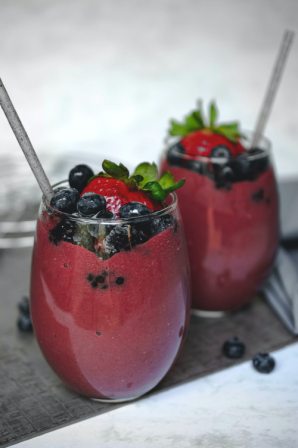 There is an energy crisis in the USA. I am not talking about oil and gas, I am talking about human energy. This is the energy needed to wake up in the morning refreshed, get through your work or play day and get home without feeling burned out and exhausted.
There is an energy crisis in the USA. I am not talking about oil and gas, I am talking about human energy. This is the energy needed to wake up in the morning refreshed, get through your work or play day and get home without feeling burned out and exhausted.
Having great energy means being able to maintain a comfortable level of energy throughout the day without having your energy level “rollercoaster,” going through wide swings of big highs only to be followed shortly after with equally dramatic crashes. Having great energy is also being able to call on short bursts of high energy during a crisis without exhausting all of your energy reserves.
One of the best ways to manage your energy is to manage your body’s blood sugar. If you have Type-1 or Type-2 diabetes, you are all too familiar with blood sugar. If you do not have diabetes, this could be new information. Your blood sugar is simply how much sugar is contained in your blood vessels. Our body likes to have a medium level of blood sugar to feel best and too much or too little will have negative effects.
The foods that have the most negative effects on our blood sugar level are those with added sugars of any type, or eating refined grains, such as non-whole grain wheat, white rice, white pasta, etc. Refined grains are called fast carbs because they are digested very rapidly, converted to sugars and then quickly absorbed into your blood vessels. High blood sugar can make you feel energetic, awake and pretty good for a very short time. However, this comes at a stiff price in the dreaded quick blood sugar crash. Just as a temperature thermostat in your house works to control the room temperature by turning on the air conditioning when the temps get high, your pancreas does something similar to control your blood sugar. When the pancreas senses a rapid rise in blood sugar, it will over-release the hormone insulin, causing an equally quick and severe crash in your blood sugar.
Low blood sugar has a number of negative effects on you. When your blood sugar is low, your body instinctively thinks food is scarce and in response releases other hormones. Two of these hormones are glucagon, the hormone that gives you a strong hunger drive, and cortisol, your primary stress hormone (think fight or flight). The end result is that you feel sluggish, moody, irritable, agitated, jittery, hungry and generally stressed out. These types of feelings are not helpful when you need to get things done and deal with people and demanding situations. The time frame from blood sugar peak to valley is about 1.5 to 2 hours. When in a blood sugar low, we often grab the first thing we see to eat, usually some sugary drink, refined carb snack such as a donut, bagel, snack bar or meal such as pasta — repeating the same cycle all day long.
What I have described for you is what makes up a typical American’s eating plan. At the end of the day, this type of eating takes more energy out of you than it puts into you. The way to avoid and make this better is to eat foods that maintain an even, slow release of sugars over a long period of time, four to five hours. The best way to do this is to eat whole grains and to avoid as much added sugars as possible. In addition, eating protein and or fiber with meals and snacks will slow down the absorption of sugars. If you feel like something sweet, try a fruit. Although high in sugar, the fiber will slow down the absorption of sugar.
Another common issue I see that puts you on a blood sugar rollercoaster is skipping meals. Often people skip breakfast thinking this is a good way to lose some weight. This strategy backfires in a number of ways. First, you maintain a low blood sugar state for a long period of time, making you feel cranky and hungry. Next, it will slow your metabolism, allowing your body to burn even fewer calories. If you just need to have something sweet, try a low calorie sweetener. I have found xylitol with the brand name Xyla to be the healthiest and best tasting low calorie sweetener. Xylitol will not raise your blood sugar and release insulin.
When nutritionists talk about anti-aging foods, they’re referring to foods that help prevent conditions such as osteoporosis, inflammation and cancer. This smoothie is loaded with long-term-health boosters. The berries and green tea are potent sources of antioxidants, and the ground flaxseed is full of inflammation-fighting omega-3s. It also contains yogurt, a source of bone-strengthening calcium and immune-supporting probiotics. Blend it for breakfast, and the vitamins, protein and fiber will provide lasting energy for whatever comes your way.
Energy Smoothie
Makes one 14-ounce smoothie
1/2 cup frozen organic blueberries
1/2 cup frozen organic strawberries
1/2 cup chilled green tea, unsweetened
3/4 cup plain low-fat organic Greek yogurt
2 tablespoons ground flaxseed or chia seeds (no need to grind these)
Natural sweetener or Xylitol to taste
Combine all ingredients in a blender and blend on medium speed until smooth, about 20 seconds. Garnish with fresh berries and serve. Note: For a nondairy alternative, you can substitute cultured soy for the yogurt. You can also substitute other fruit.
Dr. Stuart Offer is a Wellness Coach & Educator.








Comment here